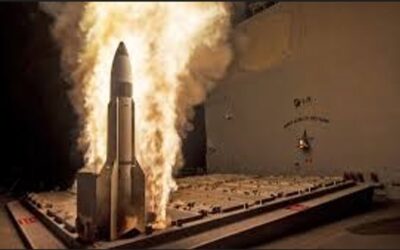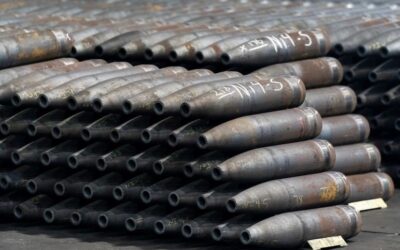The recent presentation of the start-up company Lambda Automata at the “Investing in Deep Tech: Dual-Use Technologies” conference…

*Athanasios Tsakalos
According to several sources, the UK is planning to send armor-piercing rounds which contain depleted uranium (DU) to Ukraine. The said rounds are to be used with the Challenger 2 tank squadron donated by the British Army.
Russia has warned the UK not to provide depleted uranium rounds as ammunition for the tanks it is sending to Ukraine, saying they contain a “nuclear component”.
As reported by Declassified UK, British Defence Minister, Baroness Goldie, made the admission on 20th March saying that such rounds are highly effective in defeating modern tanks and armoured vehicles.
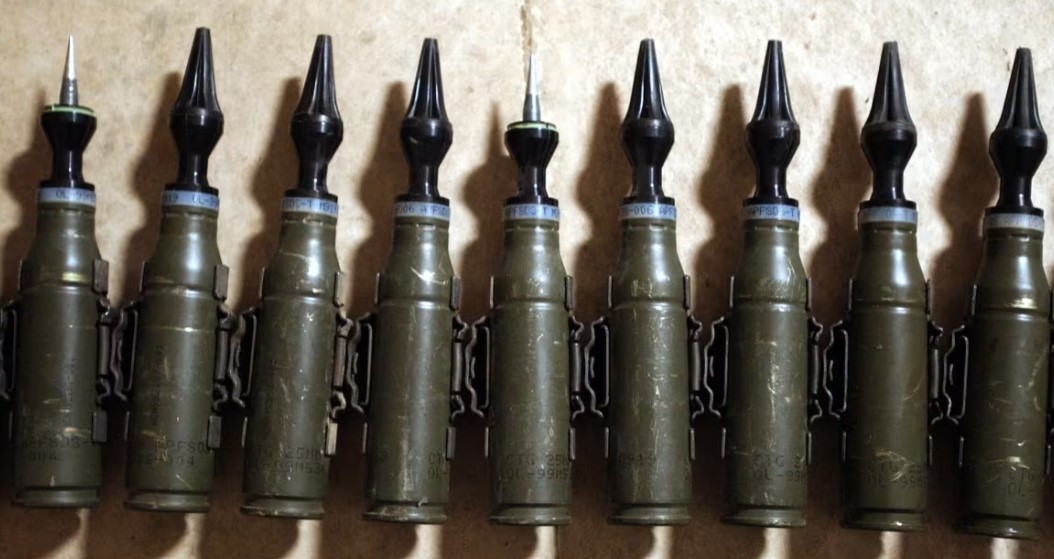
Russia has previously warned it would regard the use of depleted uranium in Ukraine as a “dirty bomb”. Further, the Russian President, Vladimir Putin, has threatened that he “will have to respond accordingly”, while his Defence Minister, Sergei Shoigu, said that this development puts the world “fewer and fewer” steps away from “nuclear collision”, thus quickly denouncing the move as escalatory.
Yet, the UK Ministry of Defence does not consider depleted uranium rounds a nuclear capability, noting that Russia also uses depleted uranium-based ammunition. In fact, Britain’s Ministry of Defence said the use of armour-piercing DU shells is “standard” in modern warfare and Russia is aware of that, but it is deliberately trying to disinform.
If the United Kingdom follows through on the announcement, it will become the first country to openly send the controversial rounds to Ukraine. DU is a remarkably hard substance, making it an effective material for rounds meant to penetrate the reinforced armour of vehicles and tanks.
The United States used the weapons extensively in Iraq and reportedly deployed them in Syria during the fight against ISIS. Russia also claims to have DU rounds, though it remains unclear if the Kremlin has used them in Ukraine.
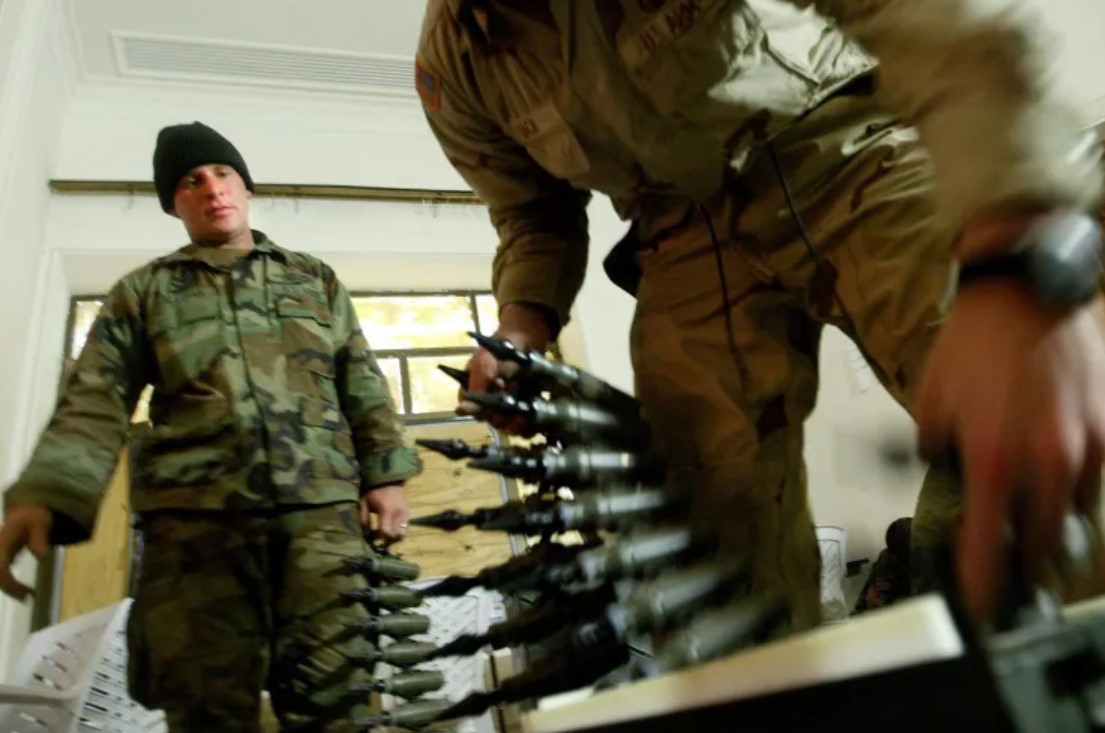
US soldiers pack up 25mm depleted uranium rounds into ammunition cases at a base in Tikrit, Iraq, in 2004
Depleted uranium munitions were used in the 1991 Gulf War against Iraq’s T-72 tanks and again in the invasion of the country in 2003 as well as in Serbia and in Kosovo.
In the 1970s, the US Army began making armour-piercing rounds with depleted uranium and has since added it to composite tank armour to strengthen it. It has also added depleted uranium to the munitions fired by the Air Force’s A-10 close air support attack plane, known as “the tank killer”.
Also read: Ukraine | Proven use of Top Attack BONUS 155 mm artillery shells – Photos
Depleted uranium is a byproduct of the process to create enriched uranium used in nuclear fuel and weapons. Although far less powerful than enriched uranium and incapable of generating a nuclear reaction, depleted uranium is extremely dense, thus making it highly attractive as rounds.
What is DU ammunition?
The DU round is usually part of kinetic energy ammunition (APFSDS Armor Piercing Fin Stabilized Discarding Sabot) in the form of a rod, which is stabilized with fins during its flight and has a destructive effect on the target due to its high impact speed (depending, of course, on the angle of impact as analyzed further below).
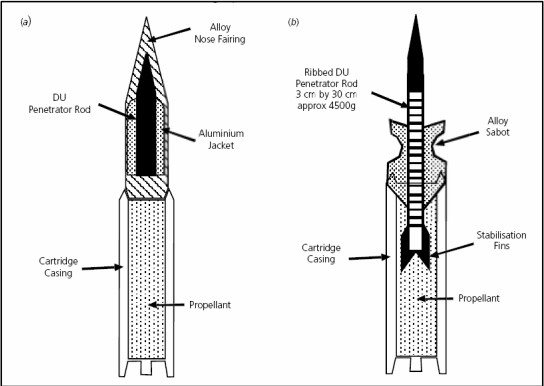
APFSDS rounds are in the arsenal of many countries, but only a few companies in the world produce rounds of this class using DU, such as the L27A1 APFSDS projectile manufactured by the Royal Ordnance Factories of the United Kingdom for use in the 120 mm TKL 30, 55 calibre gun of the Challenger 2 tanks.

These armor-piercing rounds are generally known as “kinetic energy penetrators (KEPs)”. Depleted uranium is preferred over other metals because it has high density, pyrophoric properties (self-ignites at temperatures 600–700 °C and high pressures) and becomes sharper when penetrating the tank shell.
Also read: National Guard | Live fire with Refleks anti-tank missile by T-80 tanks – VIDEO & Photos
Upon impact with the target the depleted uranium piercing heads ignite, shatter into small pieces (fragments) and create clouds of suspended dust (aerosols) of depleted uranium, whose size depends on the angle of impact, the projectile’s speed and the temperature.
Impact on the human body
A DU munition hit produces uranium oxide. This usually accounts for between 10-30 per cent of the uranium in the round, but this can go as high as 70 per cent. Most of the resulting oxide dust stays inside the tank, which is hit. This means that breathing in DU dust inside the platforms is the main hazard after such a hit. DU particles which escape from the scene are deposited rapidly because of the density of the metal and do not normally disperse easily.
As such, in the short term, people who are likely to be exposed to the highest doses of depleted uranium rounds are therefore those that are near the target during impact or those that examine the target or enter the target (tanks) after detonation.
People who will find and use these rounds or fragments may be exposed to external radiation emitted by them. Due to the type of radiation that depleted uranium emits, the dose received would only be significant, if this person has immediate contact – for a sufficient time – with depleted uranium rounds/fragments.
In the long term, taking into account that a large percentage of the depleted uranium rounds launched by warplanes do not find the target, surveys of DU residues made in the combat zones of the former Yugoslavia, Kuwait and Iraq, where intensive use of DU munitions was made, demonstrated that concentrations are within the typical concentration range of natural uranium in soil with a few exceptional “hotspots”.
Therefore, measurements show that DU, after military use in combat, will mainly be located inside of military vehicles hit by DU ammunition and in their close vicinity. DU ammunition in the soil will slowly corrode and hotspots with high local concentrations of DU may remain locally close to the impact site.
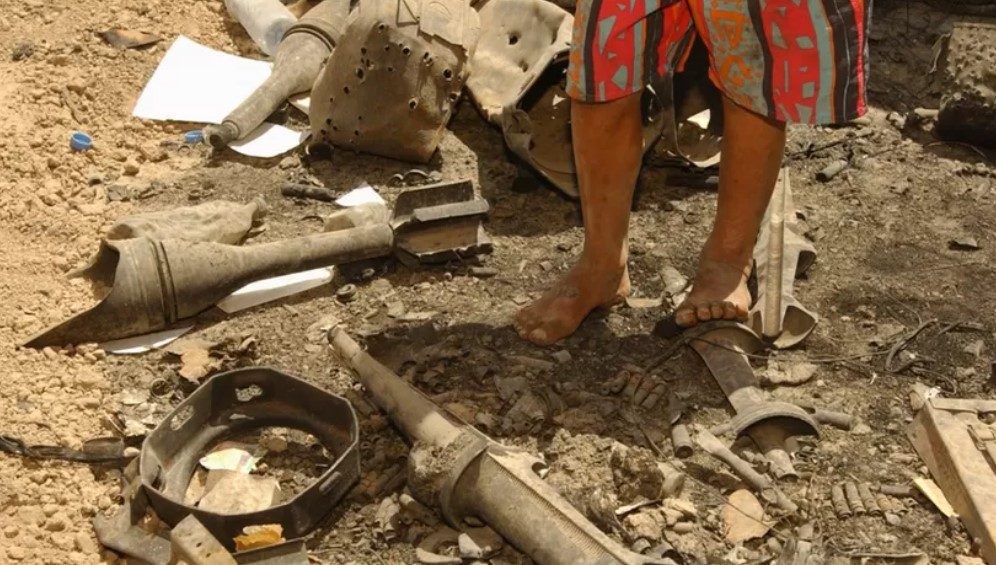
In summary, general contamination with DU, even in areas of heavy fighting with documented intensive use of DU ammunition, is low or could not be demonstrated and It is generally accepted that depleted uranium is mildly radioactive.
Yet, the chemical toxicity of depleted uranium is considered a more significant issue than the possible impacts of its radioactivity. The IAEA says inhaled or ingested uranium can be harmful if “in sufficient amounts” because of its “chemical toxicity”. Its main risk is chemical, rather than radioactive and in high concentrations in the body, uranium can cause kidney failure or lung disease.
The legal dimension
Regarding the legal status of this type of ammunition, according to the UN Institute for Disarmament Research, depleted uranium ammunition cannot be considered a nuclear weapon, as it does not meet the legal definitions of nuclear, radiological, biological, chemical or incendiary weapons.
Also, the UK MoD insists that the depleted uranium rounds are not prohibited by any international agreement and, under Article 36 of the Additional Protocol of 1977 to the Geneva Conventions of 1949, depleted uranium rounds are capable of being used lawfully in international armed conflict.
READ MORE
VELOS ROTORS | Velos V3 UAS introduced as ideal example of dual-use systems
The “Investing in Deep Tech: Dual-Use Technologies” conference held at the Hellenic Armed Forces Officers’ Club in…
US Navy | First combat use of SM-3 Missiles
In a historic first, US Navy Arleigh Burke-class destroyers deployed Standard Missile-3 (SM-3) anti-missile interceptors in combat…
SIPRI | New record in global military spending
In 2023, global military spending set a new record for the ninth consecutive year, according to research by SIPRI, the Stockholm-based…
Iraq – Turkey | Sign more than 20 agreements
Turkish President, Recep Tayyip Erdogan, met with his Iraqi counterpart, Abdul Latif Rashid, in Baghdad on the occasion of his official…
Lambda (λ) Automata | Autonomous surveillance solutions at “Investing in Deep Tech: Dual-Use Technologies” conference
The recent presentation of the start-up company Lambda Automata at the “Investing in Deep Tech: Dual-Use Technologies” conference…
VELOS ROTORS | Velos V3 UAS introduced as ideal example of dual-use systems
The “Investing in Deep Tech: Dual-Use Technologies” conference held at the Hellenic Armed Forces Officers’ Club in…
OCCAR | Additional Night Vision Goggles
The Director of the Organisation for Joint Armament Cooperation (OCCAR), Mr. Joachim Sucker, has signed a third amendment to…
Iraq | Εxplosion at military base south of Baghdad
A major explosion at a command post of the Iraqi Army took place today Saturday about 50 kilometers south of Baghdad…
















